I love to be surprised when I travel. This is why I hardly plan my trips but leave room for serendipity.
I heard about Cao Dai Temple from the hotel’s concierge I was staying in Ho Chi Minh. I had only two days to spend in Ho Chi Min but wanted to do something different. The concierge has offered me a few alternatives, and I have chosen the one that seemed to be unique, and the one I knew I couldn’t do it by myself. I googled about it the night before the bus ride to Cao Dai and the visuals and images of the Temple’s interior grabbed my attention and raised my curiosity. I already started to plan in my head what I wanted to shoot.
Cao Dai Temple is located outside a small city of Tay Ninh, 60 miles away from Ho Chi Minh. Even though it is not a central location in a big city, this temple has been the center of Cao Dai, which has five millions followers. Even though Cao Daiism is not the country’s dominant religion, it is the largest homegrown one. The temple attracts thousands of believers and pilgrims and tourists who come to experience this beautiful interiors. The Temple in Tay Ninh is considered the largest one, where the religion was founded in the year of 1926 and where the authority of the Cao Dai is located.
‘Cao Dai‘ means the highest spiritual place where GOD exists. And when I got there, I understood why. It is one thing to see it in pictures, and another thing to see it in your own eyes. I loved the bright lively colors of the Temple’s exterior and was quite curious to get inside, not before leaving my shoes outside the Temple. (out of respect for the holly place). Both exterior and interior of the Cao Dai Temple are extravagantly decorated by incorporating symbols, abstract designs and images of saints. The high ceiling is painted sky-blue with fluffy clouds and the floor tiles have busy patterns. The dragon-encrusted columns that run the length of the nave number 28, representing the 28 manifestations of the Buddha. Seven-headed cobras represent the seven human emotions. But the most important symbol is the Divine Eye, which is representing God.
There are four daily services inside the Temple, each service lasts for approx 30 minutes. mostly chanting. I think the main service when tourists come or when guided tours visit is at noon time. During the service you need to keep quiet. We, the observers, were standing on the second floor, looking at the service from above. I was able to take pictures of the priests and pilgrims while they got ready to enter the main hall, bowing before commencing the service. Only priests and pilgrims are allowed in the Temple’s service. While the Cao Dai’s priests were wearing robes in the three principals colors of Cao Dai: Yellow for Buddhism, Blue for Taoism and Red for Christianity, the pilgrims were wearing White. I couldn’t help but notice that the majority of the prayers were elderly people,. It might be a sign of the decline of the religion or simply a natural byproduct of people raising families and working. It also seemed to be an egalitarian faith, because there were just as many of the priests and student priests older women.
At the end of the service, when I was heading out toward the tour bus, I was quite surprised to hear Hebrew. I always turn my head around when I hear Hebrew. It is a habit I got since I was living in New York. I guess Israelis are everywhere.
If you are planning a trip to Vietnam and heading to Ho Chi Minh city, don’t miss on Cao Dai. It is so worth it.

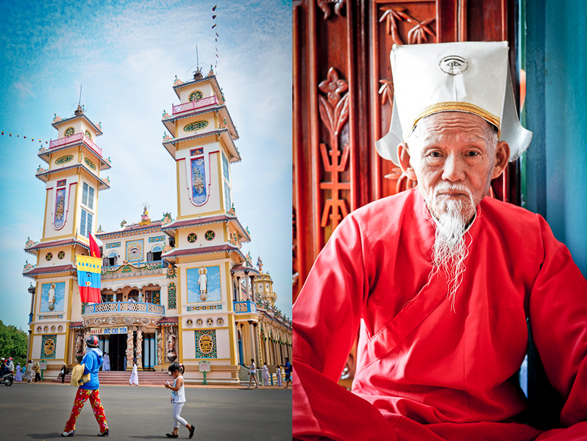
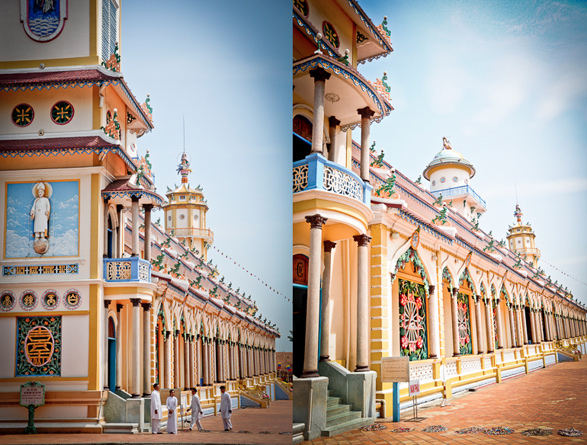
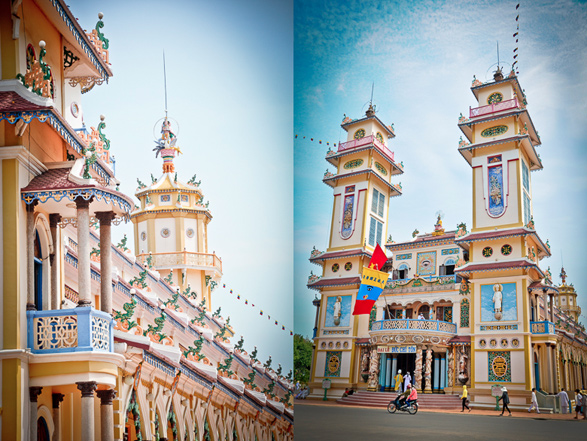
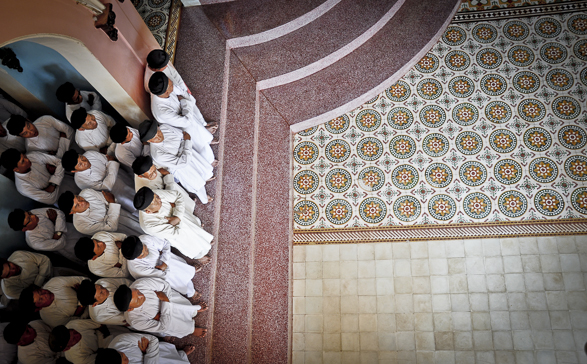
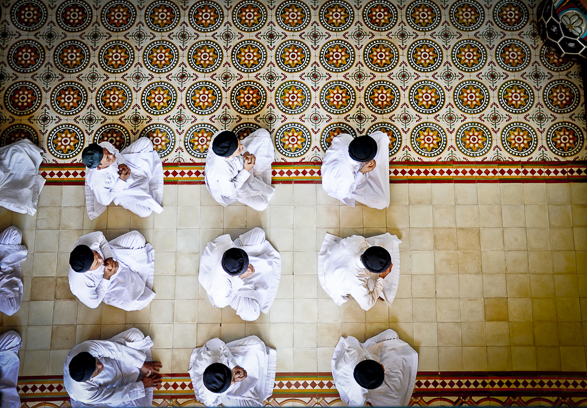
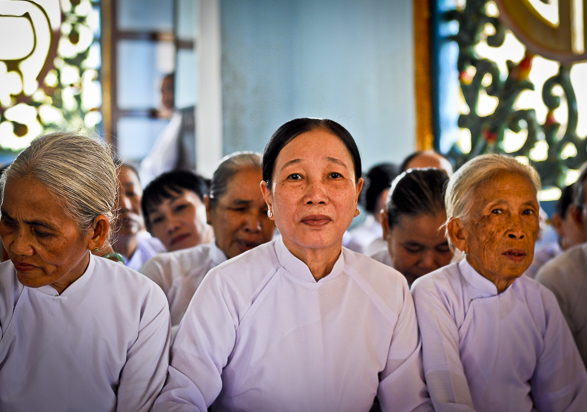
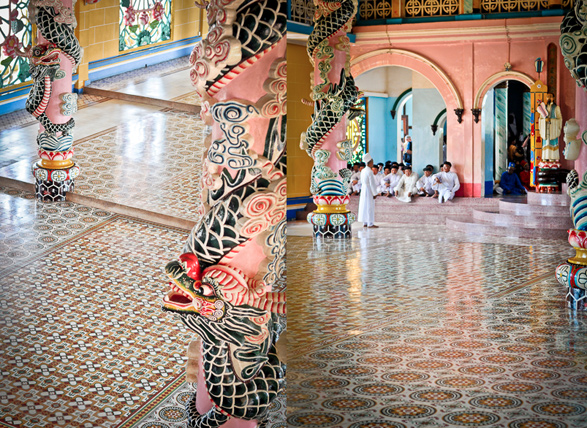
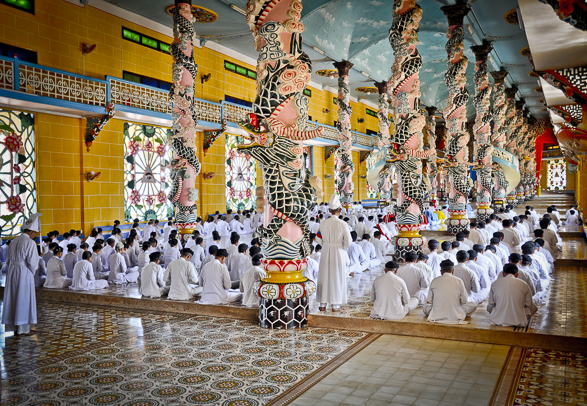
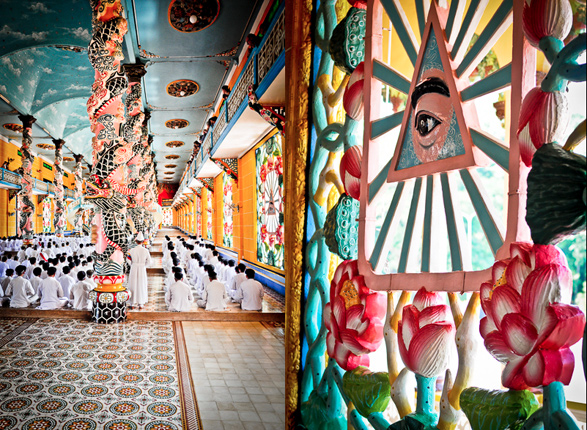
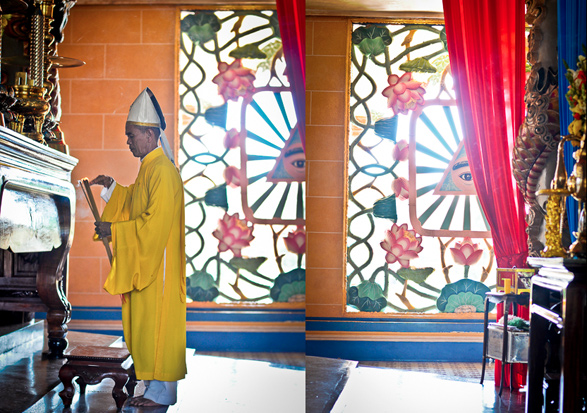
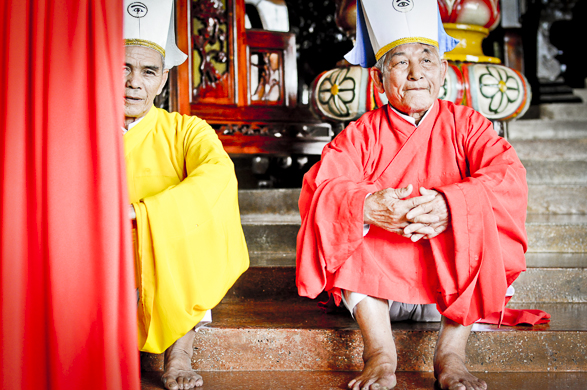
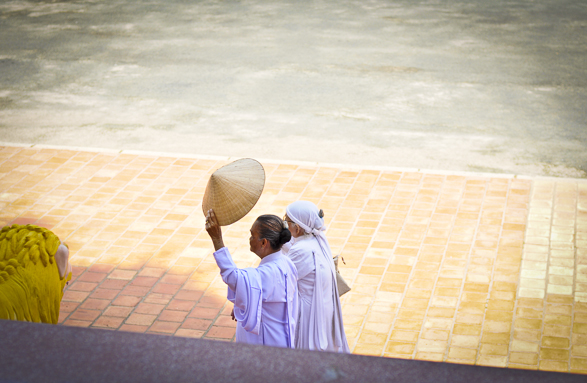
1 Comment
Thanks for the excellent pictures. I came across your blog when I was trying to find some good articles to persuade my friends to take a trip to visit my mother’s hometown (which is Tay Ninh). Have you tried eating local cuisine in Tay Ninh too? They are well-loved by the people in Saigon! :)